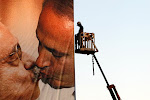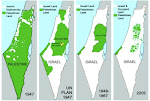Burning Issue - Weapon or flare?
Or perhaps white phosphorus can be called a weapon with flare, if you are referring to the smokescreen artillery shells that the Israeli army deployed in Gaza. Since January, the use of "Willy Pete" in a densely packed battlefield surrounded by a fence has been contentious. Human Rights Watch and some UN members are calling for a war crimes trial. Israel calls for an internal (eternal?) inquiry.
White phosphorus, known as Willy Pete, ignites when exposed to the air. It is not banned by international law so long as it is used to create a smoke screen to protect advancing troops or to illuminate targets. However, the 1980 Geneva treaty stipulates it must not be used as an offensive weapon in densely-populated areas, where civilians can sustain severe burns.
Ugly outcomes result when this so-called precision munition is misused.
Meanwhile, three months after Operation Cast Lead dropped its first bombs, the Israel Defence Forces issued a body count of its own for Palestinian casualties during its latest Gaza offensive. Israeli tallies say that among 1,166 Palestinians killed, 709 had been identified as "Hamas terror operatives, among them several from various other terror organisations". Another 162 men have not been yet attributed to any organisation, while 295 "uninvolved Palestinians" had died, including 89 minors and 49 women.
These numbers are at marked variance with those collected by the Palestinian Centre for Human Rights. It says 1,417 Palestinians died, including 926 civilians – 313 of whom were minors.
Local press reports showed outgoing Israeli Prime Minister Ehud Olmert absolutely gloating with pride about his air force taking out a smuggling convoy in the Sudanese desert, which was reportedly on its way to supply Hamas with long range missiles capable of striking Tel Aviv, via the tunnels.
















No comments:
Post a Comment